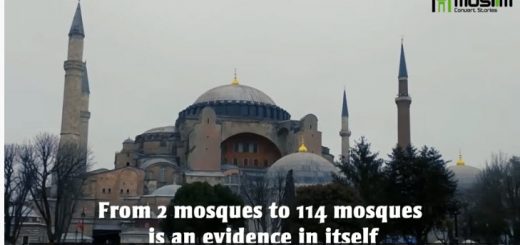Islam to Indochina
Indochina includes Vietnam, Cambodia, and Laos. It has a similar story to what happens with Muslim minorities in this region. Most of its people since ancient times had different beliefs, such as Hinduism. Hinduism reached Singapore from India and prevailed in the region except for Anam in northern Vietnam. Anam was influenced by the Confucius theory that united China. Then, Buddhism reached the Indian subcontinent and spread among the peoples of the region.
Islam was introduced to Indochina in the fourth century AH, or a little bit earlier, through Muslim traders, who carried out Da‘wah activities as well. These traders landed on the main harbors, or in the compulsory stops for ships. Therefore, the coasts of the Anam kingdom regularly received Muslim traders, which led to the spread of Islam there and between the people of Champa, which were called “Hui Hui”, a name with which Chinese people refer to Muslims until now.
Islam flourished in Champa in the eighth century AH when the relationship between the Kingdom of Champa and the Muslim sultan in the Indonesian islands was strengthened. The kingdom of Champa dates back to the year 420 years before Hijrah (BH). It engaged in conflicts with its Chinese and Cambodian neighbors, and perhaps it is the oldest country founded by the Malay people. The kingdom of Champa was dependent on trade that was the main source of its wealth. Islam did not spread in Indochina apart from this region due to the retreating coastal lines, forming wide gulfs such as Siam in the south and Tonkin in the north.
Since the eighth century AH, Champa has been an Islamic province. It reached its maximum territorial extension in 875 AH/ 1470 AD. Its northern borders reached the outskirts of Tonkin, near present-day Dong Hoi city, which includes the southern part of what is known today as North Vietnam. Its southern borders reached the Cu Chin district, at about 75 km north of Saigon [Hồ Chí Minh City]. Thus, the Islamic kingdom of Champa included most of South Vietnam and the southern parts of North Vietnam, and it consisted of five provinces.
Champa had strong bonds with Muslims in all their countries; hence, when Muslims grew weak and their strength waned, Champa waned as well. This whetted the appetite of its neighbors to invade it. Vietnam, whose lands included Tonkin on the banks of the Red River in the North, invaded Champa in 875 AH.
The Vietnamese invasion lasted for almost four centuries (875 – 1338 AH), (1470 – 1823 AD). It proceeded gradually from the north until it swallowed the whole kingdom. Vietnamese forces launched a full-scale war of extermination against the Muslims of Champa. When Vijaba, the capital of Champa, fell into the hands of the Vietnamese invaders, they killed sixty thousand of the population, and captured thirty thousand, taking them to Hanoi, the capital of Vietnam.
Then, the Vietnamese invaders started their settlement operations in Champa until the very people of Champa became strangers in their own country. When the king of Champa saw the deteriorating situation of his kingdom and his helplessness, he fled to Cambodia. This marked the beginning of the Islamic presence in Cambodia in 1237 AH/ 1823 AD. These Cham Muslims still live in Cambodia until now. They are called, “Khmer Islam”, which means Cambodian Muslims. Another group of Champa Muslims fled to Malaysia and Indonesia.
Number of View :1141













